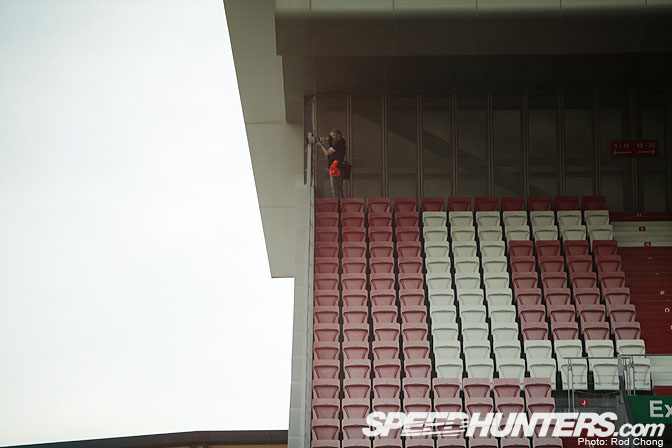

At the beginning of this current month, we asked if you guys had any photography related questions to ask us Speedhunters. We received so many questions that we're going to answer as many as we can. Here are the first answers of this three part series.
RJ: What is a decent cheap camera i can get to start photography with?
Linhbergh: I'm under the impression that every entry level camera that is currently out on the market are amazing feats of engineering. Each camera out, be it a Nikon, Canon, Olympus, Panasonic, or Sony, is are all very, very capable cameras. Look at your budget, see what you can afford. Next, I would recommend any would-be DSLR buyer to remember how quickly they learn. If you're a slow learner, an entry level camera would be a great stepping stone. If you're an overall fast learner, maybe save a bit more and look at a more mid-range camera system with more capabilities. Everyone learns new things at different speeds. So, take that into account when you're shopping around. Also remember that photography is all about the lenses and quality of glass rather than the camera body itself. I would recommend any would-be photographer to buy a 50mm f1.8 in addition to any kit lens that comes with whatever camera you're purchasing. The 50mm is a great way to learn photography because it forces you to worry more about the shot than what focal length you should be shooting at. It also has a great shallow depth of field (blurried backgrounds aka bokeh).
Mike: There's lots of great cameras out there, but I'd suggest any of the entry DSLRS from Canon or Nikon or even a used version of an older model. You'll have an endless selection of lenses, and plenty of room to grow.
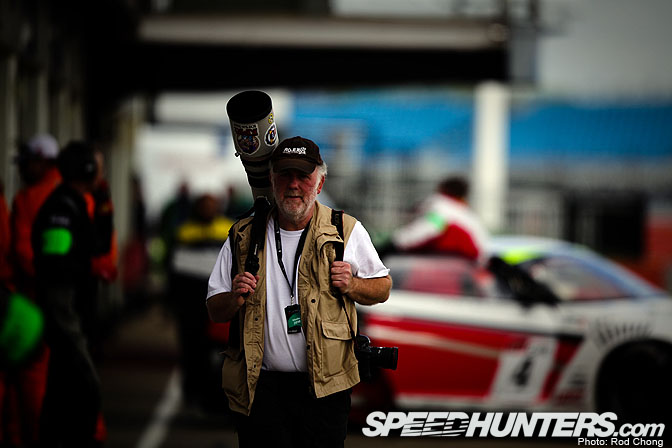
Beach: Sort of a general question, I've been doing photography for a few months seriously and my whole life just to capture pictures, but i still have no idea how metering works. What is the difference between spot and zone metering? And in what exposure types do I use it? (ie Apeture priority or manual) Where do i set it and how?
Paddy : The different metering modes are used by the camera to read the scene and adjust the exposure accordingly. Evaluative is the default, this gauges the entire frame to find the exposure. Spot Metering uses only a small centre spot of the frame to gauge the exposure, this particularly useful for backlit subjects. Partial is somewhere between evaluative and spot where it gauges more of an area than spot but less than evaluative. There should be a comprehensive guide in your camera's manual regarding what modes and where to set it, but you can usually set it in the manual and semi-auto modes (Program, Shutter Priortity, Aperture Priority, Manual etc)
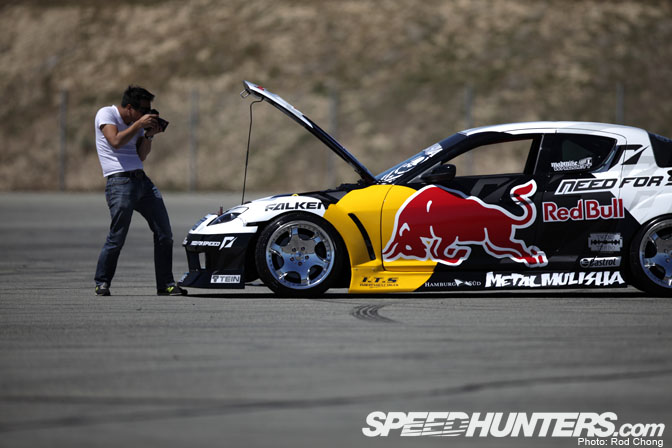
Simon from New Zealand: One of the things I really struggle with in motor sport is framing the subject. So often you arrive at a track, and there's clutter all the through the background, unfriendly officials waving you away and 50 other shooters jostling for position. Bearing in mind that half of us won't have f2.8 glass to blow out backgrounds… What tips do you have for framing shots in ugly/cluttered/busy/challenging environments?
Linhbergh: Fellow Speedhunter, John Brooks, once recited an old Australian phrase to me: "you piss with the *** you got, mate." Or in laymen's terms, you do the best with what is given to you. If you're given shooting situations that aren't favorable to you, you do your best to work around it. Even if you don't have extremely long glass with extremely shallow depth of field, you can still get great shots with a normal 55-200mm f4.5-5.6 or something similar to that. With a long lens like that, you can pan the cars (1/160th of a second to about 1/60th) or shoot wide open at the longest length for a shallow depth of field with a very fast shutter speed to freeze the action. In addition to shooting with a long lens, you can shoot with a wide lens. You can use an 18mm to 24mm and drop down the shutter speeds with to do a wider pan. If you're in the pits shooting portraits and are equipped with a 50mm, drop the aperture to the lowest you can and start snapping away! The shallow depth of field of the prime lens makes for some great shots when the background is cluttered with so many things. And always remember, do your best with the situation that is given to you.
Mike: Yep, just work with what you have and wear you are. Cluttered background? Maybe try to work in that clutter for an interesting shot. Or on the other end you have tracks like Buttonwillow Raceway which are about as "unscenic" as a race track can get, but there are ways to use the open space to get cool shots.
Paddy: Work wide and slow or tight and fast. Also, move around ! Don't be afraid to go somewhere else just because there is no one else standing there (within reason, always listen to the safety marshalls / corner workers). I make a point of swapping locations every ten to twenty minutes to ensure I have the greatest variety of images after the event. If one spot is particularly good, I'll try capture a frame of each car there before moving on.
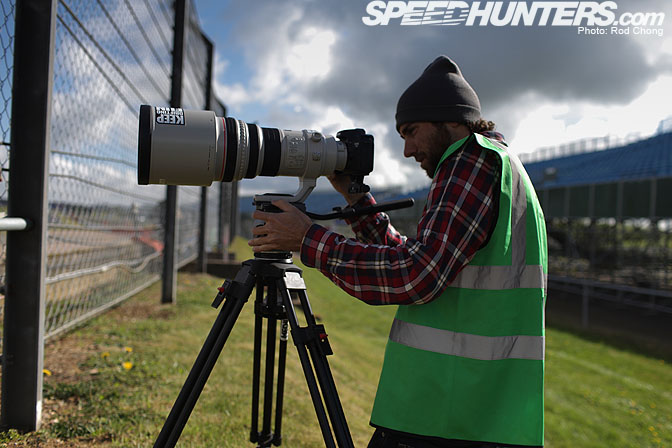
Keith: What does it take to become a working professional in the photography business?
Linhbergh: What does it take? Extreme hunger. You have to want something so bad that you do everything in your power to get that special something. It also takes a strong resolve, self-sacrifice, determination and a good dash of luck. So things like significant others, private life, social life and health were (and still are) things that were expendable as I worked towards what I wanted –to be able to make a living off sucking in light. I will be blogging about my journey from being a hobbyist to become who I am today later this month.
Mike: It's the same as any other field really. Work hard and don't take anything for granted. With the internet and photo technology these days, anybody can be a photographer. That means you have to work that much harder if you want to become a "professional".
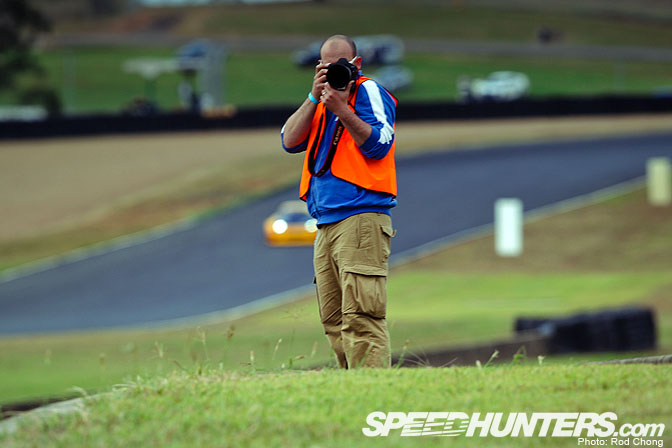
Rod: What lens focal range is best suited for still car photography especially in fairly open spaces? Is that range on a cropped frame or full 35mm frame? How do you process your photos? What is your workflow?
Linhbergh: I started learning photography on a cropped camera. The lenses I used for car shoots was a 18-70mm and a 50mm. But once I switched to my current full frame camera, with much more knowledge of my growing personal style, I use all prime lenses: 24mm, 50mm, and 135mm. Shooting only prime (fixed focal length) lenses is definitely not for everyone. So, my advice to the learning photographer is to rent or get your grubby hands on as many lenses as you can and start to narrow down which sort of glass you like to shoot with while starting to identify your own personal style.
When it comes time to get into post-processing of photos, I select some music that suits my current mood, load up Photoshop and start playing around with things. I usually never know how the outcome of my post work will turn out because of this very process.
My work flow consists exclusively of Adobe Photoshop and Adobe Bridge.
Mike: An old saying is that it's good to use focal lengths at both ends of the spectrum – either up close from a wide angle, or far back with telephoto lens. Helps to get rid of the "point and shoot" look. For post processing, I generally use Adobe Lightroom for sorting and selecting my shots, then photoshop for minor touchups.
Paddy: It depends on your style and preferences. I prefer shooting cars at 50mm and above so as to retain a more accurate representation of the car. Anything under 50mm will begin to suffer from barrel distortion and the shape of the car can morph quite considerably. I use a combination of Lightroom and Photoshop.
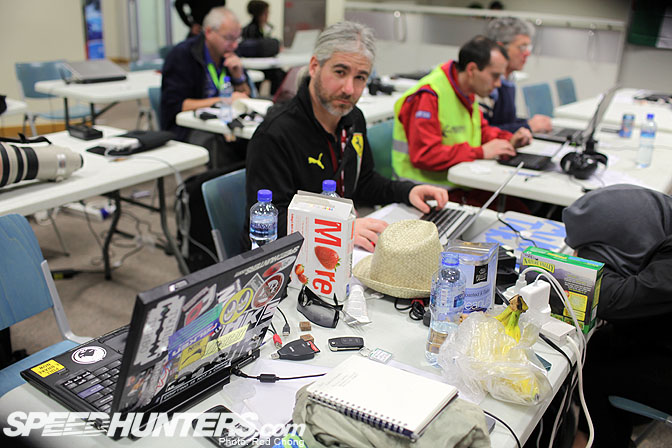
Dade: Do you do anything to draw attention to yourselves taking certain pictures to get a desired reaction captured on film?
Linhbergh: Most of the time at events, we speedhunters consider ourselves as photo-journalists and never to do anything to change the mood or course of action of the events that we cover. But when there's a more intimate setting to sit down and talk to someone while I take photos of them, I do a combination of both letting them be who they are and also injecting some of my own thoughts into the photographic journey. For example, in my interview with the infamous Smokey Nagata, I interviewed him through a translator and let him do what he naturally does to feel comfortable. During the first few minutes of the interview session while I was starting to photograph Smokey, he felt a bit uncomfortable, so I just had to remind the translator to tell him to ignore this giant camera that is in his face completely. As the interview continued, he then became comfortable with the sound of my shutter and acted very naturally –while smoking heavily of course. So, at times you have to control the situation by saying the right thing, or other times, you have to just let the course of events run through. Finding that perfect balance of when to intervine just takes practice and time.
Mike: No not really, I usually the vehicles and the action speak for themselves.
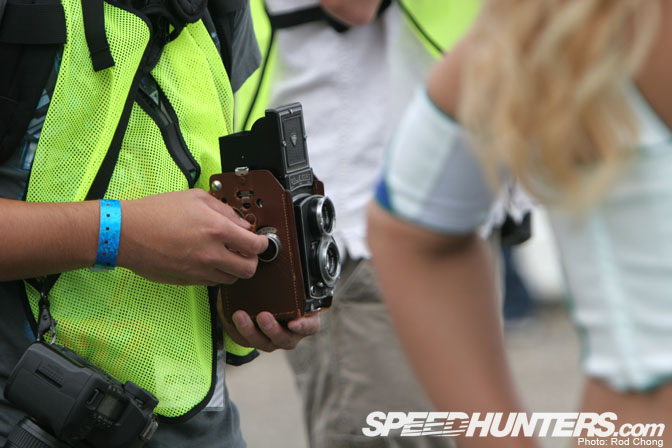
Jon: How easy/difficult is it to get press passes for racing events, in particular ALMS at Laguna Seca? How much would it cost for an independent (some relatively newbie like me) to get a pass?
Linhbergh: Getting media passes for established racing series is actually quite a difficult process. They only want approved media vendors to be there to make their organization look good. For someone like me, who is attached to this blog, to get an ALMS accreditation took the combined effort of our fearless leader, Rod Chong, Andy Blackmore, and myself. His Rodness had to submit a letter saying that definitely do contribute to Speedhunters, Andy Blackmore also sent another, and I had to, of course, apply. There are a whole lot of hurdles to jump.
I hate to be the bringer of bad news, but for a hobbyist photographer that is not partnered up with any form of media, or racing team, it would be very difficult to get media access to the events.
Mike: Like Linbergh said it depends on the event. Generally the more established the series, the harder it is to get access. Keep in mind though, a lot of circuits have great photo ops even from general viewing areas. Laguna Seca is definitely one of these places.
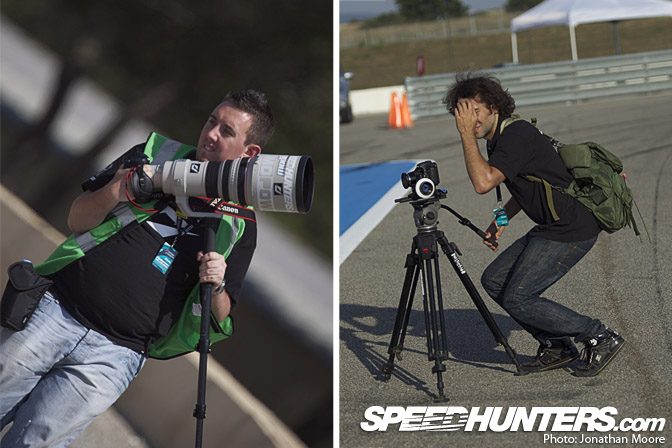
Jon: Out of curiosity, do any of you guys prefer Nikon? Even better, does anyone use any DSLRs outside of the Canon/Nikon realm?
Linhbergh: I'm under the camp that it does not matter what you shoot as long as the end result is what the photographer envisioned it to be. I believe all of us on the speedhunters team, coincidentally, use Canon gear.
Mike: I started off shooting Nikon, and the only reason I switched to Canon because of the ease in sourcing equipment – especially borrowing from friends . For starters, unless you come across some crazy stash of equipment for one of the smaller companies,, I don't see much reason to choose a brand outside of the big two.
Paddy: I've been a Canon guy since I started. I've no idea why it was just a subconscious choice at the time. Since then, I've invested heavily in Canon equipment and it wouldn't make any sense to swap over at this stage. However, I have briefly used Nikon equipment and asides from the different controls, I found them to be quite a nice camera to use. Ross I'Anson is the odd one out here as he's the only Nikon users AFAIK. To echo the guys, I wouldn't consider anything outside of the Canon / Nikon realm as the lenses and accessories are just that much easier to come by.
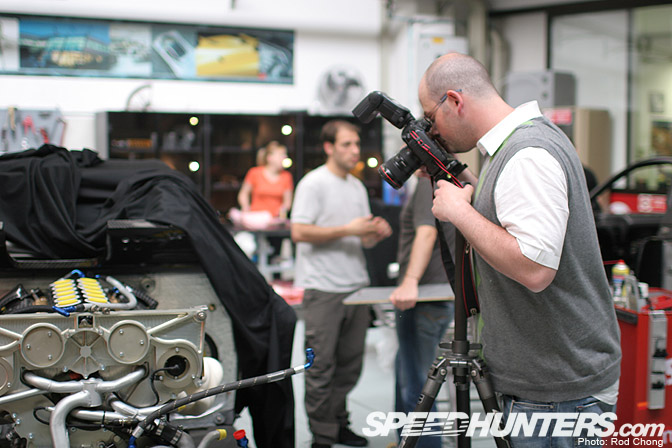
Nathan: Any lighting tips? I see photos here on Speedhunters that look like it should be impossible to expose everything properly (i.e. direct sunlight + shadows). Do you use HDR? If so, how do you do that with a moving car?
Linhbergh: I've found out over the my short time of being a photographer that I like to pack light bringing only the most necessary of gear. I do have a flash, but that sits at home collecting dust more and more these days. I almost always shoot with whatever light is available to me at the time. I personally rarely ever use HDR. Each photo should be able to tell its own story, and if the process of HDR enhances the story telling capabilities of the photo, then yes, I will use it.
Mike: On a lot of today's cameras the high ISO capabilities are fantastic. Combine with decent glass, and there isn't a lot of need for flash. I also have one, but it doesn't get used much.
Paddy: I'm going to go against the guys here by saying I'm an avid user of flash both on and off camera. Like anything, the key is subtlety and with direct flash diffusion is of the utmost importance. Also the amount of detail a RAW file can capture can allow you to take several exposures from the same image and composite them together in post. This isn't ideal for event reports as the images need to be processed quickly but with static shoots where more time is available for post processing work, it allows you greater control over the final image. For most of my static work, I'll expose the car and background separately and combine them later in post.
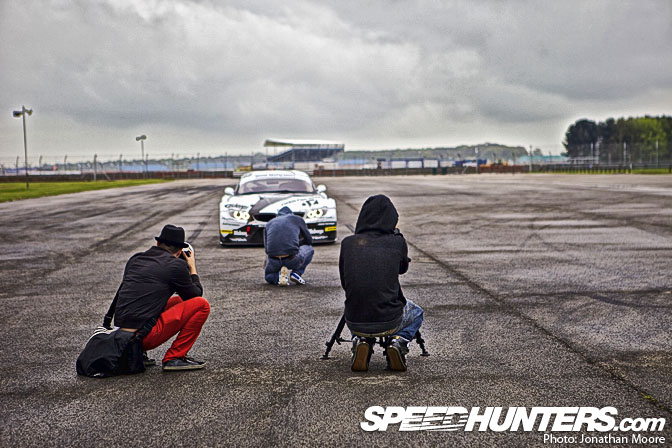
Do the red pants really bend light to Rod Chong's will?
Linhbergh: Yes, yes they do.
Andy Blackmore: You should see what he wears to the office…….
Paddy: I heard the red pants are actually the source of eternal youth. Rod is in fact 67,000 years old.






really great post, guys. thanks.
I'd like to see a post that shows a bunch of different images and then talks about how each one was set up (lighting, positioning, etc) and then how the shot was taken (metering, timing, etc). that would be really helpful to me.
Gotta say, those are some great tips from the pros!!
 the 50mm was my best purchase ever, besides all of my other glass.
the 50mm was my best purchase ever, besides all of my other glass.
And I being a nikon guy
And at only a tad bit over $100, you can't beat it!
Fantastic post, I look forward to the rest of this series. I have a question to throw in, may have already been asked but.... do you guys recommend any certain photography web sites or magazines as "the Bible" for learning and new tips & tricks? There's just so many to choose from and I'd like to narrow it down
You were right in saying that Ross is the odd one out, that man will wear a beanie hat in the middle of summer.
awesome article !
Great!!! And thanks! ^^
great piece Lin. As Rod said, a good way to check out gear is by renting. I can recommend http://www.lensrentals.com/ (no affiliation) I was looking at a new Nikkor 70-200mm f/2.8 for around $2100, rented it for Petit Le Mans over a 10 day period for $130.
Some say Rod can defy gravity at will in those pants...
Wow! Thanks a ton for answering my question. Its great to see you guys doing articles like this to help aspiring speedhunters out, Keep up the good work!
Great article. It's really good to know all this. Keep it up!!! Greetings from El Salvador, Centra America.
Keep it up!!! Greetings from El Salvador, Centra America.
Beautiful post, I read this blog everyday week to week
but I have a doubt you,
(SpeedHunters) how do you meet, through it blog
motorsport own photos or contacts?
and another question (sorry)
What would be the best telebojetivo canon, the 70-200 2.8?
the 100-400? all coupled with a 1.4x?
and the "sessions" on the file still, as they do
under f2.8 lens wearers to achieve this effect?, coupled
Strobist?
Greetings!
I have only 15 years, and I love the photos, and i have a canon 350d, but i have a lot of questions!
Excuse my English, I'm from Chile
As a designer, I have to do a lot of product photography, and here at work we have access to both Nikon and Canon DSLRs. While both take nice pictures, I think the one area that really sways me towards Canon is the user interface. It is much more intuitive, easier to change settings, and "makes sense". The Nikon, in comparison, has the tech specs of the Canon, but it is harder to use purely because of the UI. As a designer I find details like this important, which is why I shoot with only Canons.
Viva las Fiddys!!!!
great stuff! i've learned a thing or two, and some other things i already knew have been confirmed.
Fantastic post, i'm looking forward to Linhbergh's story on photography too.
AMAZINGLY INFORMATIVE! I just got myself a 50mm 1.7 and I love it!
Great article!
Thanks a lot for answering my question!
I have something to say in regard of this site as of late. MANY pictures taken on this site do NOT require/ need fancy cameras or gears (especially the ones taken in parking lot).
I thought this site was dedicated about fast cars....it turned out to be more about photography, who is the most skillful photographer and sh!t like that.
Shall you keep this site simple and strictly related to cars, without adding unnecessary fancy crap?
Great post, thanks! Looking forward to more of this..
that TLR camera is bangin.
just wondering, what are your takes on "lomography" toy cameras/ plastic lens?
Love to see the pros repping the primes. Stoked guys!
i love this post!!! teach me a lot of things!
Fantastic post, I absolutely love when real questions regarding stuff I have no idea about gets answered like photography!
RED PANTS FTW!
hey very helpful.. I'm gonna go for a Canon.. EOS 50 type of range{??}.. this needs to be a regulat feature too..
Thanks for the great read
@ Andrew...
Holga FTW!!!!!!!!!!!!!
Fantastic article, I look forward to more photography tips as I go through the learning process myself.
Thanks, what a great article, I always enjoy hearing about how the pros do it. :]
That definitely answered Alot of questions. I am just starting with photography and have a G11. I love it and I am definitely learning alot about all the settings that I need in different situations and it is setting me up for a better upgrade in the future.....but for now it takes awesome pictures and I get alot of compliments.... I love looking at all the articles on here and this was probably one of my favorite articles! Thank you!